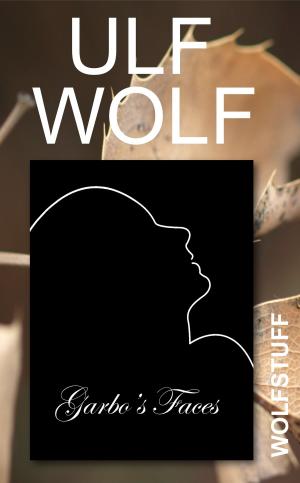| Author: | Ulf Wolf | ISBN: | 9781301046867 |
| Publisher: | Ulf Wolf | Publication: | July 18, 2013 |
| Imprint: | Smashwords Edition | Language: | English |
| Author: | Ulf Wolf |
| ISBN: | 9781301046867 |
| Publisher: | Ulf Wolf |
| Publication: | July 18, 2013 |
| Imprint: | Smashwords Edition |
| Language: | English |
Long, long ago, deep in the Burmese jungle—on the long eastern shore of what was to be called Lake Indawgyi but which was then named for Ei-vu, the spirit of long, sweet water—there lived two tribes:
The Mera, and the Lasi.
Their lands, as large as any among the scattered jungle peoples of their time, with the long lake as their western borders, also bordered each other, Lasi’s to Mera’s north and Mera’s to Lasi’s south.
The Lasi and the Mera, for as far back as legend could reach, had always been mortal enemies, and so they remained.
When Ea-pe created Thanai, the first man, this first man founded the Mera tribe. When Ea-pe created E-u, the first woman, she joined Thanai as his Mera bride and wife. This is what all Mera children were taught by their Yaj-Hate and his helpers.
The Lasi children, on the other hand, were taught that all Lasi stem from Thanai and E-u who were the very first Lasis and who would ever be the father and mother of their tribe. This was so because Ea-pe himself was Lasi. So preached the Lasi Yaj-Hate and his helpers.
The Mera children were also taught, over and over, that anyone who said that Thanai and E-u were not of the Mari tribe, or that they were not the founders of the Mari tribe—always referring to the Lasi, though not saying so openly—were evil and in the grim power of Bilu, the hungry ghost who cast no shadow and who ate children. It was a long-established and well-known fact among the Mera that all Lasi were under Bilu’s spell, and that many Lasi children were eaten by Bilu each year.
Yes, so the Mera children were taught, and they were taught to be grateful that they were born Mera children and not Lasi children, or they might be dead and eaten by now.
Were the Lasi to lay down their weapons and acknowledge the Mera as their betters, and were they to pay tribute to Mera’s excellence and superiority in all endeavors, then, perhaps, Bilu would stop eating Lasi children, but not before then.
This is what the Mera children were taught.
The Lasi children, however, all knew that all Meras were really nothing but Ngoyamas disguised as humans, cannibal demons that wished for nothing more than a sumptuous meal of Lasi child. And if they did not behave, the Meras would sneak into their village at night and carry them away for dinner.
And so, back and forth, generation after generation, went the tribal teaching of their children.
These children, whether Mera or Lasi, unless bitten and killed by vipers or other poisonous creatures, eventually grew up, all with both fear and hatred in their hearts, along with an unease at living so close to such evil enemies.
And all male children, once grown—unless selected as Yaj-Hate helper, a great honor—took up weapons and protected their borders and maimed and killed their enemy as needed, and all female children grew up to have children of their own to whom they passed on these eternal lessons about the Lasi or the Mera.
There was another tale, one whispered among those whose will to fight had begun to fade, a tale frowned upon by the Yaj-Hates of both tribes, a tale that told that when Ea-pe created the world and all beings in it, Thanai and E-u were neither Lasi nor Mera, but of another tribe so ancient that no one can remember its name. But these were just ramblings of the too-old-to-fight. Or so said the both the Lasi and the Mera Yaj-Hates. Don’t listen to these fools. They know nothing. And they will soon walk the path, anyway.
Long, long ago, deep in the Burmese jungle—on the long eastern shore of what was to be called Lake Indawgyi but which was then named for Ei-vu, the spirit of long, sweet water—there lived two tribes:
The Mera, and the Lasi.
Their lands, as large as any among the scattered jungle peoples of their time, with the long lake as their western borders, also bordered each other, Lasi’s to Mera’s north and Mera’s to Lasi’s south.
The Lasi and the Mera, for as far back as legend could reach, had always been mortal enemies, and so they remained.
When Ea-pe created Thanai, the first man, this first man founded the Mera tribe. When Ea-pe created E-u, the first woman, she joined Thanai as his Mera bride and wife. This is what all Mera children were taught by their Yaj-Hate and his helpers.
The Lasi children, on the other hand, were taught that all Lasi stem from Thanai and E-u who were the very first Lasis and who would ever be the father and mother of their tribe. This was so because Ea-pe himself was Lasi. So preached the Lasi Yaj-Hate and his helpers.
The Mera children were also taught, over and over, that anyone who said that Thanai and E-u were not of the Mari tribe, or that they were not the founders of the Mari tribe—always referring to the Lasi, though not saying so openly—were evil and in the grim power of Bilu, the hungry ghost who cast no shadow and who ate children. It was a long-established and well-known fact among the Mera that all Lasi were under Bilu’s spell, and that many Lasi children were eaten by Bilu each year.
Yes, so the Mera children were taught, and they were taught to be grateful that they were born Mera children and not Lasi children, or they might be dead and eaten by now.
Were the Lasi to lay down their weapons and acknowledge the Mera as their betters, and were they to pay tribute to Mera’s excellence and superiority in all endeavors, then, perhaps, Bilu would stop eating Lasi children, but not before then.
This is what the Mera children were taught.
The Lasi children, however, all knew that all Meras were really nothing but Ngoyamas disguised as humans, cannibal demons that wished for nothing more than a sumptuous meal of Lasi child. And if they did not behave, the Meras would sneak into their village at night and carry them away for dinner.
And so, back and forth, generation after generation, went the tribal teaching of their children.
These children, whether Mera or Lasi, unless bitten and killed by vipers or other poisonous creatures, eventually grew up, all with both fear and hatred in their hearts, along with an unease at living so close to such evil enemies.
And all male children, once grown—unless selected as Yaj-Hate helper, a great honor—took up weapons and protected their borders and maimed and killed their enemy as needed, and all female children grew up to have children of their own to whom they passed on these eternal lessons about the Lasi or the Mera.
There was another tale, one whispered among those whose will to fight had begun to fade, a tale frowned upon by the Yaj-Hates of both tribes, a tale that told that when Ea-pe created the world and all beings in it, Thanai and E-u were neither Lasi nor Mera, but of another tribe so ancient that no one can remember its name. But these were just ramblings of the too-old-to-fight. Or so said the both the Lasi and the Mera Yaj-Hates. Don’t listen to these fools. They know nothing. And they will soon walk the path, anyway.















